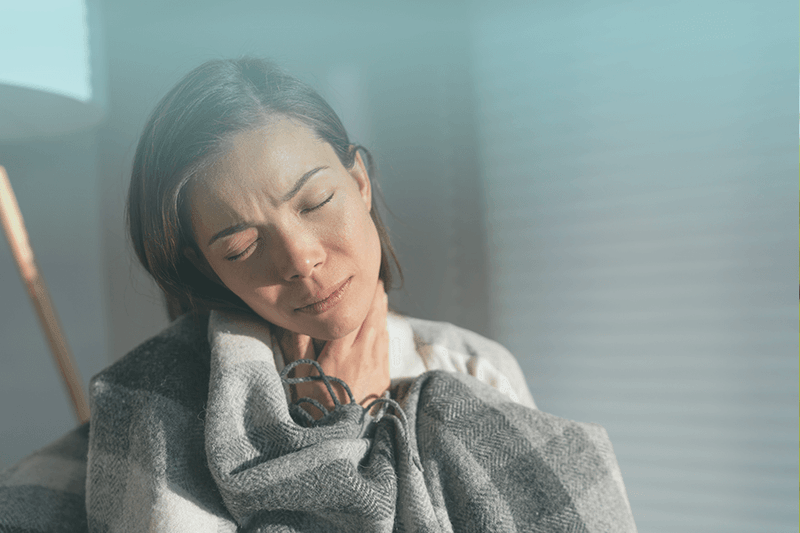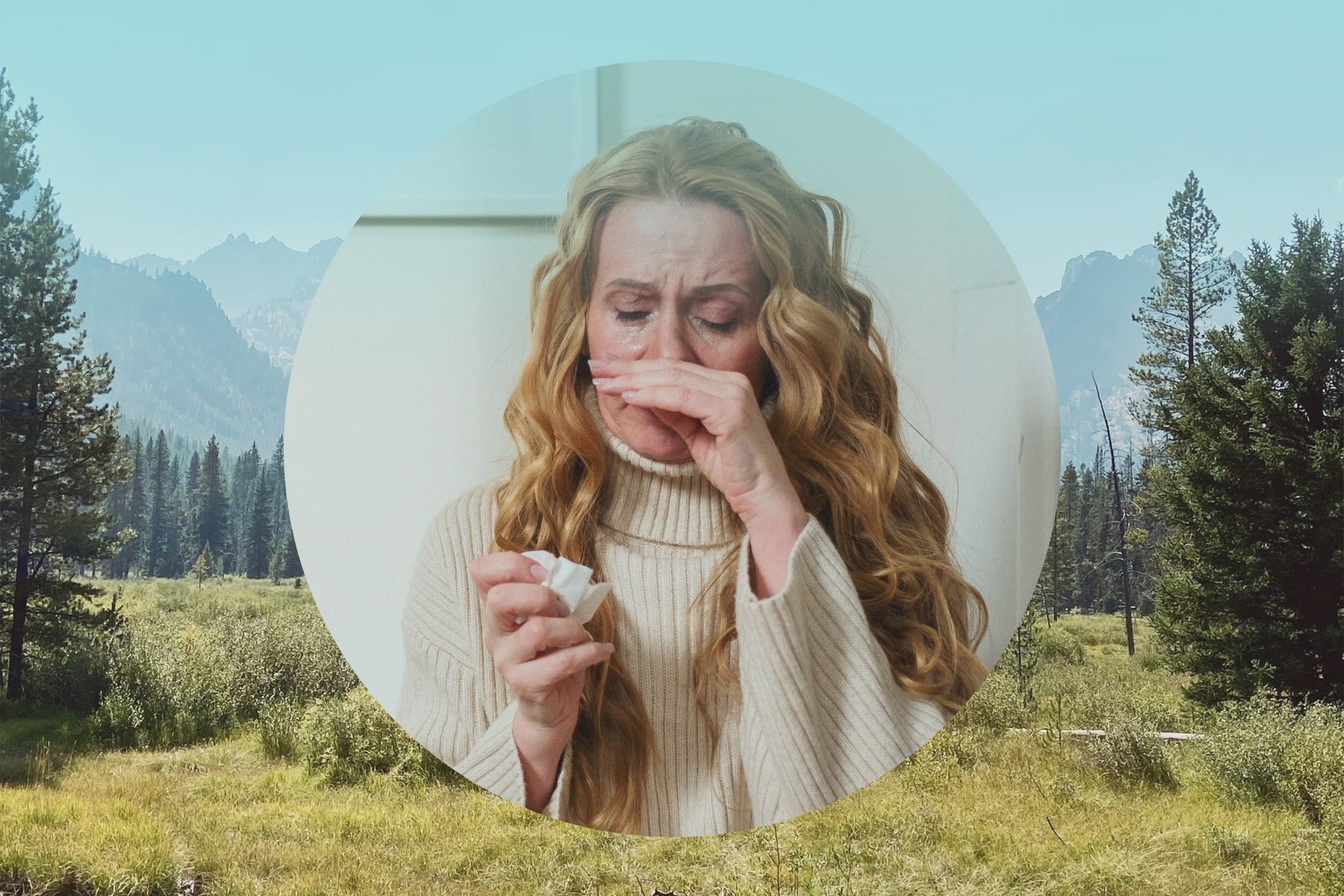Breathe Freely

Pollen Allergies in San Antonio Explained
The melting pot of South Texas, “The Alamo City” seamlessly blends the influences of distinct cultures across its 465 square miles and nearly one and a half million residents. But throughout that vast and varied fabric, something else is mixing as well… Allergens!
What You Should Know About Pollen Allergies in San Antonio
From its tantalizing Mexican cuisine to its bustling biergartens, booming energy sector, and Spanish architecture, San Antonio, TX, is a prime place for people of all backgrounds to carve their niche. If you’re a lover of outdoor recreation and exploration, you too can find that much-needed escape.
Spend a day at the historic Alamo, ruminate at the Japanese Tea Gardens, go deep in the Natural Bridge Caverns, or soak up nature at the San Antonio Botanical Garden. Just be cautious. Whether you’re traipsing the River Walk or zipping on an E-bike, allergens are always around. Increased exposure to these air-borne buggers can, for some, be almost debilitating.

Are San Antonio’s Pollen Allergies Bad?
This is a question without a definitive answer. After all, every person is uniquely affected (or unaffected) by pollen allergies. While San Antonio has been ranked for its seasonal allergies, any ‘allergy season’ is only as bad or as good as the person enduring it.
Take, for instance, allergies to grass or trees.
While trees in San Antonio begin pollinating as early as December, their cycles can last for months on end, overlapping the pollination periods of grasses. For susceptible individuals, this can spell disaster. Others may be less bothered, perhaps only noticing a scratchy throat or runny nose when ragweed becomes prominent in the fall.
Let’s take a closer look at how San Antonio’s pollen allergies compare to other large metro areas in the country.
Ranking Pollen Allergies in San Antonio, Texas
One of the best ways to determine pollen allergy severity is by referencing a report from the Asthma and Allergy Foundation of America (AAFA). This 2023 Allergy Capitals report provides critical information for seasonal sufferers. With a quick glance, you can see just how problematic the largest 100 cities in the continental U.S. really are.
According to the AAFA, San Antonio, Texas, currently comes in at 37th place overall, with a mean designation of “Average” across three categories: All Pollen, Medicine Use, and Specialists. All three categories are weighted and summed, reaching San Antonio’s total score of 73.75.
What Does San Antonio’s Pollen Allergy Score Mean?
You may be scratching your head, wondering what these numbers actually indicate. While it can get a little complicated, let’s break it down. This way you’ll understand not just how the city ranks and rates, but why it could be an issue for your allergies.
Pollen Counts
Using data derived from automated pollen sensors, the AAFA obtained daily pollen counts throughout the year for grass, tree, and weed allergens. From there, the AAFA was able to determine just how many days each city had “high” and “very high” counts. In the calculation for each city’s pollen score, “very high” days carried greater weight. Pollen allergies in San Antonio, for example, received an overall designation of “Worse Than Average.”
Medicine Use
First off, this category doesn’t just refer to any type of treatment or DIY remedy. Under “Medication Use,” the AAFA drew on sales data of over-the-counter allergy meds and sinus meds. This data was based on a per-patient prevalence, so if a greater percentage of patients were purchasing medicine, that indicated greater allergy needs.
San Antonio received a rating of “Better Than Average” for medication use, indicating a lower sales-per-patient prevalence compared to typical cities.
Allergy Specialists
This category specifically referred to the number of allergy specialists available in the metro area of each city. Only board-certified allergists were considered. As with medication use, this category assessed the per-patient prevalence of immunologists. Cities with a smaller percentage of specialists received lower scores in this category. San Antonio scored an “Average” rating in this category.
Is San Antonio a Safe Place for Pollen Allergies?
In reviewing the rankings and ratings assessed by the AAFA, one can conclude that San Antonio is generally a worse place for seasonal allergy sufferers. However, this information alone is not conclusive. After all, every immune system differs in its reaction to allergens. You must also consider changing weather patterns, regional trends, and the role of overall climate change. While Texas is home to the second worst city in the country for allergy sufferers, San Antonio - fortunately - is further down the list.
But It All Depends On Your Sensitivities!
According to the AAFA, San Antonio is the 21st worst city for tree pollen and the 17th worst for grass pollen. In terms of weed pollen, however, San Antonio ranks 96th, meaning that fall pollen allergies may be far less problematic than winter, spring, and summer pollen allergies. Alongside San Jose, San Francisco, Austin, and Buffalo, the city of San Antonio is one of the five best for weed pollen allergies.
Again, this will vary widely between individuals. As always, you should speak to your healthcare provider for a tailored treatment plan right for your symptoms. And speaking of symptoms, if you’re unsure what’s causing them, you’re not alone.
From Arizona Ash to Oak, Redtop to Timothy, and Amaranth to Pigweed, the species and varieties of vegetation in San Antonio sure know how to get your allergies going!
Main Sources of Pollen Allergies in San Antonio, TX
Are you feeling sick and congested in mid-July but feel fine by August? Do your symptoms come and go for days, or do they last for months on end? Do you notice a runny nose, cough, scratchy eyes, and itchy skin in certain places but not in others?
Frustrated and tired of not knowing what’s causing your allergies?
If you find yourself repeatedly symptomatic in similar months, seasons, or periods, it may be due to seasonal pollen allergies. Unlike other states, Texas does not let up during the winter months. Not only do you have to deal with year-round allergens like pet dander, dust mites, and mold, but you also have to contend with certain tree species from December through late May! Then you have grass pollen through June, July, and August, and weed pollen peaking in October.
Trying to pinpoint which plant may be causing your issues? Consider the following common allergenic species:
Common Allergenic Plants in San Antonio
<style>
.my-class {
overflow: auto;
width: 100%;
}
.my-class table {
border: 1px solid #DEDEDF;
height: 100%;
width: 100%;
table-layout: fixed;
border-collapse: collapse;
border-spacing: 1px;
text-align: left;
}
.my-class caption {
caption-side: top;
text-align: left;
}
.my-class th {
border: 1px solid #DEDEDF;
background-color: #ECEFF1;
color: #000000;
padding: 5px;
}
.my-class td {
border: 1px solid #DEDEDF;
background-color: #FFFFFF;
color: #000000;
padding: 5px;
vertical-align: top;
}
</style>
<div class="my-class" role="region" tabindex="0">
<table>
<thead>
<tr>
<th><b>Tree Allergens</b></th>
<th><b>Grass Allergens</b></th>
<th><b>Weed Allergens</b></th>
</tr>
</thead>
<tbody>
<tr>
<td><ul><li>Acacia</li><li>Arizona Ash</li><li>Bald Cypress</li><li>Bayberry</li><li>Black Walnut</li><li>Box Elder</li><li>Cedar Elm</li><li>Eastern Cottonwood</li><li>Eastern Sycamore</li><li>Mountain Cedar</li><li>Post Oak</li><li>Privet</li><li>Red/Green Ash</li><li>Red Mulberry</li><li>Virginia Live Oak</li></ul>
</td>
<td><ul><li>Bahia</li><li>Bermuda</li><li>Canada Blue</li><li>Johnson</li><li>June Blue</li><li>Meadow Fescue</li><li>Orchard</li><li>Perennial Rye Grass</li><li>Redtop</li><li>Smooth Brome</li><li>Timothy</li><li>Velvet</li><li>Western Wheat Grass</li></ul>
</td>
<td><ul><li>Baccharis</li><li>Careless Weed</li><li>Cocklebur</li><li>Dock</li><li>English Plantain</li><li>Giant Ragweed</li><li>Lamb's Quarter</li><li>Nettle</li><li>Palmer's Amaranth</li><li>Prairie Sage</li><li>Redroot Pigweed</li><li>Rough Marsh Elder</li><li>Short Ragweed</li><li>Spiny Pigweed</li><li>Western Ragweed</li></ul>
</td>
</tr>
<tbody>
</table>
*All Data Obtained from the USDA Plants Database
With numerous species of trees, grasses, and weeds, it may feel overwhelming trying to understand the source of your symptoms. Fortunately, there are ways to navigate the haze. Using a simple in-home allergy test, you can detect the precise environmental allergen(s) causing your symptoms. These tests are typically suitable for seasonal pollen allergens and perennial allergies to mold, dust mites, cockroaches, and pet dander.
As always, speak with a medical professional should your symptoms become recurring or severe. It may be wise to consult with an allergist before attempting any treatment protocol. After all, you want to ensure you’re giving your body exactly what it needs.
In some cases, pollen allergies in San Antonio are directly tied to “cedar fever.”
Cedar Fever in San Antonio: What You NEED to Know
When we think of allergies, we often think of something called “hay fever.” Used to describe allergic rhinitis, or the inflammation of the nasal passages, “hay fever” refers to a collection of symptoms that can be triggered by pollen allergens, non-pollen allergens, and even non-allergenic sources.
Triggering symptoms such as stuffy nose, itchy eyes and nose, sneezing, and phlegm, hay fever can be quite the hassle.
But What’s Cedar Fever?
Like hay fever, cedar fever rarely causes a fever. Similarly, just as hay fever doesn’t come from hay, cedar fever doesn’t come from cedar, at least not technically. The tree behind this cedar fever is actually an Ashe Juniper, commonly (and mistakenly) referred to as a ‘mountain cedar.’
While there are similarities between cedars and junipers, they are not the same.
Tree species aside, the effects of cedar fever can be easy to distinguish from common allergies. Unique to cities like San Antonio that exist in the South, “cedar fever season” occurs earlier than most. While other states enjoy a momentary break from pollen during the winter, cedar season gets going right away.
The result? A hard-hitting, flu-like allergic reaction that includes everything from loss of taste and smell to exhaustion, itchy eyes, coughing, and yes, on occasion, a mild fever.
The Severity of Cedar Pollen Allergies in San Antonio
While most winter seasons see trees pollinating in February, cedar season in Texas begins in December. Depending on the tree species, pollen takes many forms. Some trees produce pollen that is so tiny you can’t see it. Other trees release easily visible pollen, marked by its powdery, yellow dust.
When it comes to “cedar fever” season, not only is the pollen visible, it’s everywhere! This happens because the trees typically release their pollen simultaneously, usually after a cold front has passed and the wind and pressure are just right. When the cones of the tree open at once, you’ll know it.
In many cases, this intense pollen release resembles a fire or smoking tree, with plumes of pollen traveling for untold miles. Although the epicenter is located in Central Texas, the sheer volume of mountain cedars can spell problems for people all over the state.
It can be so bad that people who are usually asymptomatic may experience issues due to the heavy pollen concentration. Unfortunately, due to lengthening pollen seasons, greater pollen counts, and earlier pollen production, Texas continues to be one of the worst states for seasonal allergies.
What Makes San Antonio’s Pollen Seasons Unique?
While a beautiful place to live and thrive, San Antonio, Texas, is also home to unique, allergenic conditions. Known for its undulating hills, forested sprawls, and picturesque lakes, the area makes it easy for plants to thrive as well. This means that there is always something in the air. From Ashe Junipers to Oaks, Mesquite, Ryegrass, and Pigweed, there is no shortage of symptom-triggering vegetation.
Climate and Allergies in South Central Texas
Then there’s the climate. San Antonio’s climate is something of a hybrid. Partly humid and subtropical, and partly semi-arid to the west, the city’s weather patterns can range dramatically.
Known for scorching, high-dew-point summers and milder, cooler winters, San Antonio is fertile ground for many allergenic species. With ample rain during the spring and fall, the area provides plenty of opportunities for moisture-loving molds and other organisms.
As residents learn quickly, the region is very flood-prone. With constant water intrusions, leaks, and wet conditions, various allergies can become worse. Not to mention, all that rain can rupture larger pollen clumps, releasing grains into the air. And if the rain does manage to wash the air clean, it only further stimulates plant growth - and pollen amounts - for the foreseeable future.
How to Manage Pollen Allergies in San Antonio
You’ve probably heard the typical suggestions. Avoid going outside on high-pollen days. Buy special covers for your pillows and bedding. Dust, vacuum, and clean around the house. Wear a mask if necessary. Shower regularly, change clothes, and take preventative measures.
But what if the precautions aren’t helping? And what if over-the-counter medications like antihistamines and decongestants aren’t doing the trick?
At Quello, we provide a potential treatment that lasts. Our sublingual immunotherapy includes allergy drops, taken daily under the tongue, that are tailored for you. They are based entirely on your unique immune system profile.
All we require is a tiny sample of your blood, and we can pinpoint the precise allergen affecting you. From there, we get to work formulating the drops you need.
Ready to get started with a FREE at-home allergy test?
Note: While some research supports allergy drop immunotherapy, all patients are different. Sublingual drops may not work for everyone. Always consult your healthcare provider for personalized diagnoses and treatments.

FAQ
When Is San Antonio’s Allergy Season?
Pollen allergies begin with mountain cedars in December, and other tree species continue up through May, peaking around April. In early summer, warmer and windier conditions kick up grass pollen, while autumn ushers in the worst of weed pollen. Weed pollen usually trails off by November, but every season is different. Due to immune sensitivities, weather patterns, and climate changes, no two allergy seasons are the same.
Are Pollen Allergies in San Antonio Worse Than Most?
According to the Asthma and Allergy Foundation of America (AAFA), San Antonio ranks 37th overall among the 100 largest metro areas in the United States. With a total rating of “Average,” the city scores “Worse Than Average” for its tree, grass, and weed pollen counts. If you are a seasonal allergy sufferer, you should exercise caution on days with high counts. Speak with a medical expert to tailor a prevention and treatment plan right for you.
Are Allergy Drops An Effective Treatment?
At Quello, we tailor every allergy drop to each patient’s unique immune system needs. By analyzing blood samples, we can determine which allergen, or antigen, may be triggering symptoms. We can also see various other chemical reactions in the body corresponding to this exposure. Although allergy drops do not work for everyone, some patients experience almost complete symptom relief after years of daily use.
How Do I Get Started on Immunotherapy?
We make it as easy as possible. Simply order our FREE at-home test kit, follow the directions to deliver a sample, and mail it back in the prepaid envelope. We’ll analyze your blood and formulate allergy drops that best fit your needs.
Still have questions or concerns? Contact us today!
Overcome your allergies at home with our doctor-led therapy.
Get started with our free allergy test kitGet Started with no test needed.
Overcome your allergies at home with our doctor-led therapy.
Get started with our free allergy test kitGet Started with no test needed.




